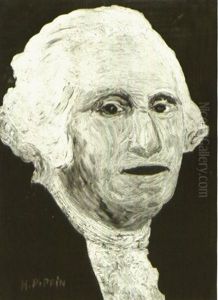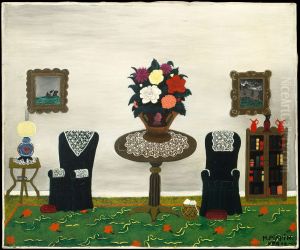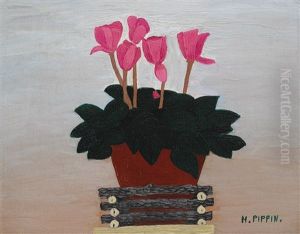Horace Pippin Paintings
Horace Pippin was an African American painter known for his depictions of the African American experience, as well as for his works that touched upon themes of war, slavery, and segregation. Born on February 22, 1888, in West Chester, Pennsylvania, Pippin grew up in a world where opportunities for African Americans were severely limited by societal and institutional racism. Despite the challenges he faced, including a limited formal education that ended by the age of 14, Pippin had a passion for art from a young age. He was known to draw on whatever materials he could find, demonstrating an innate talent and a keen eye for detail and composition.
Pippin's journey to becoming a celebrated artist was not straightforward. His artistic career was interrupted by World War I, where he served in the 369th Infantry Regiment, an African American unit that fought under French command due to the segregation policies of the U.S. Army. Pippin was wounded in the war, sustaining an injury to his right arm that severely hampered his ability to paint. Despite this, he resumed painting after the war, developing a unique method of holding the brush that allowed him to continue creating his art. His persistence paid off, and in the 1930s, Pippin's work began to gain recognition. He was discovered by the art world more or less by accident when some of his paintings were shown at a local exhibition, catching the eye of the museum director and leading to his first solo exhibition in 1937 at the West Chester Community Center.
Pippin's art often depicted scenes from his own life experiences, including his service in World War I and the African American experience, as well as religious themes and historical events such as the abolition of slavery. His style, while self-taught and thus not fitting neatly into any one category, is often associated with folk art for its directness, simplicity, and emotive power. Despite his late start and the physical challenges he faced, Pippin became one of the most important African American artists of his time. His works are held in major museums and collections across the United States, including the Metropolitan Museum of Art and the Philadelphia Museum of Art. Horace Pippin died on July 6, 1946, in West Chester, but his legacy as a pioneer of African American art continues to be celebrated today.

















